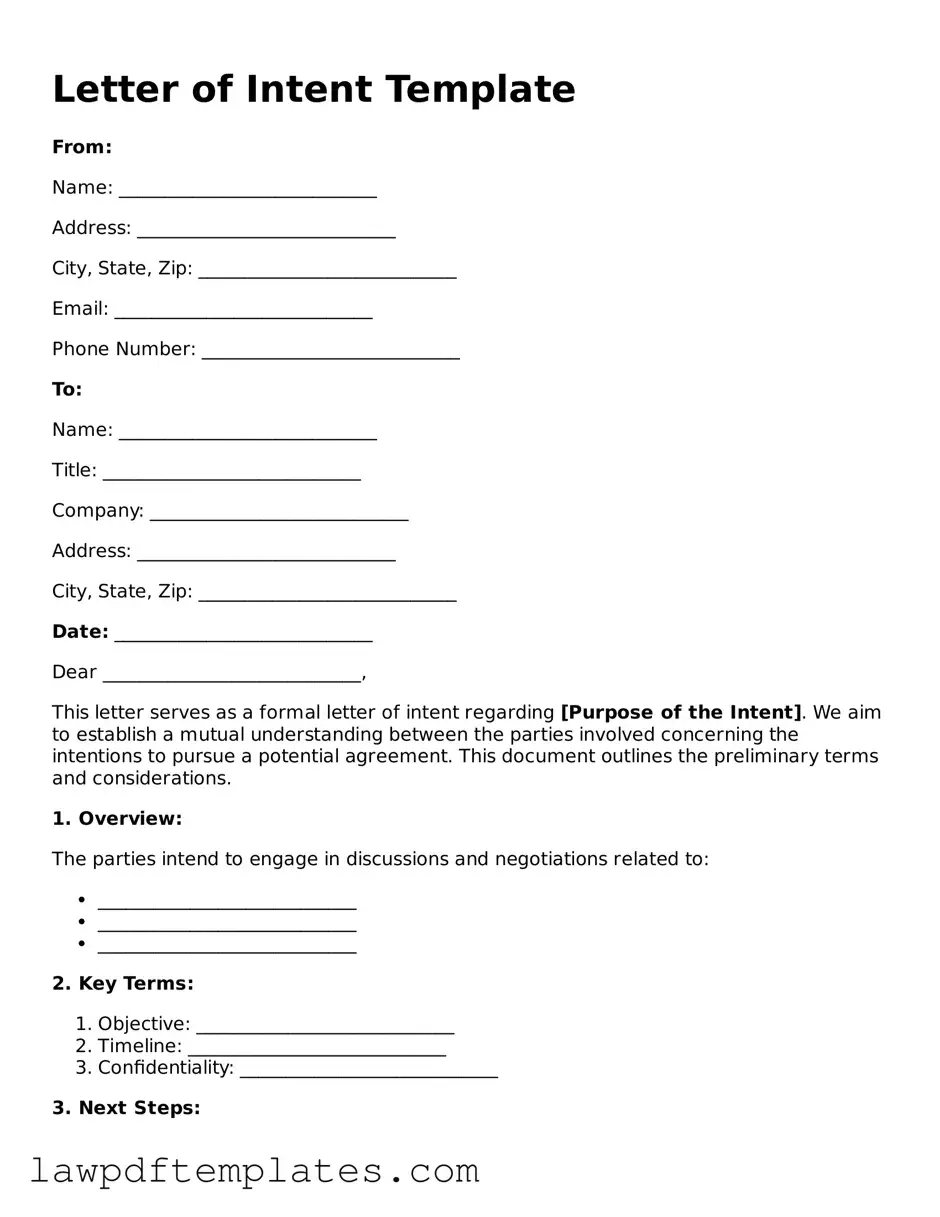Letter of Intent Template
From:
Name: ____________________________
Address: ____________________________
City, State, Zip: ____________________________
Email: ____________________________
Phone Number: ____________________________
To:
Name: ____________________________
Title: ____________________________
Company: ____________________________
Address: ____________________________
City, State, Zip: ____________________________
Date: ____________________________
Dear ____________________________,
This letter serves as a formal letter of intent regarding [Purpose of the Intent]. We aim to establish a mutual understanding between the parties involved concerning the intentions to pursue a potential agreement. This document outlines the preliminary terms and considerations.
1. Overview:
The parties intend to engage in discussions and negotiations related to:
- ____________________________
- ____________________________
- ____________________________
2. Key Terms:
- Objective: ____________________________
- Timeline: ____________________________
- Confidentiality: ____________________________
3. Next Steps:
It is acknowledged that this letter is non-binding and does not represent a formal agreement. The parties agree to:
- Initiate discussions by [Date].
- Share relevant information by [Date].
- Schedule a follow-up meeting on [Date].
We appreciate your consideration and look forward to discussing this opportunity further. Please indicate your agreement to the points outlined in this letter by signing below:
_____________________________________
Signature
_____________________________________
Printed Name
_____________________________________
Date
Thank you for your attention to this matter. Should you have any questions or require further clarification, please do not hesitate to reach out.
Sincerely,
____________________________
[Your Name]
